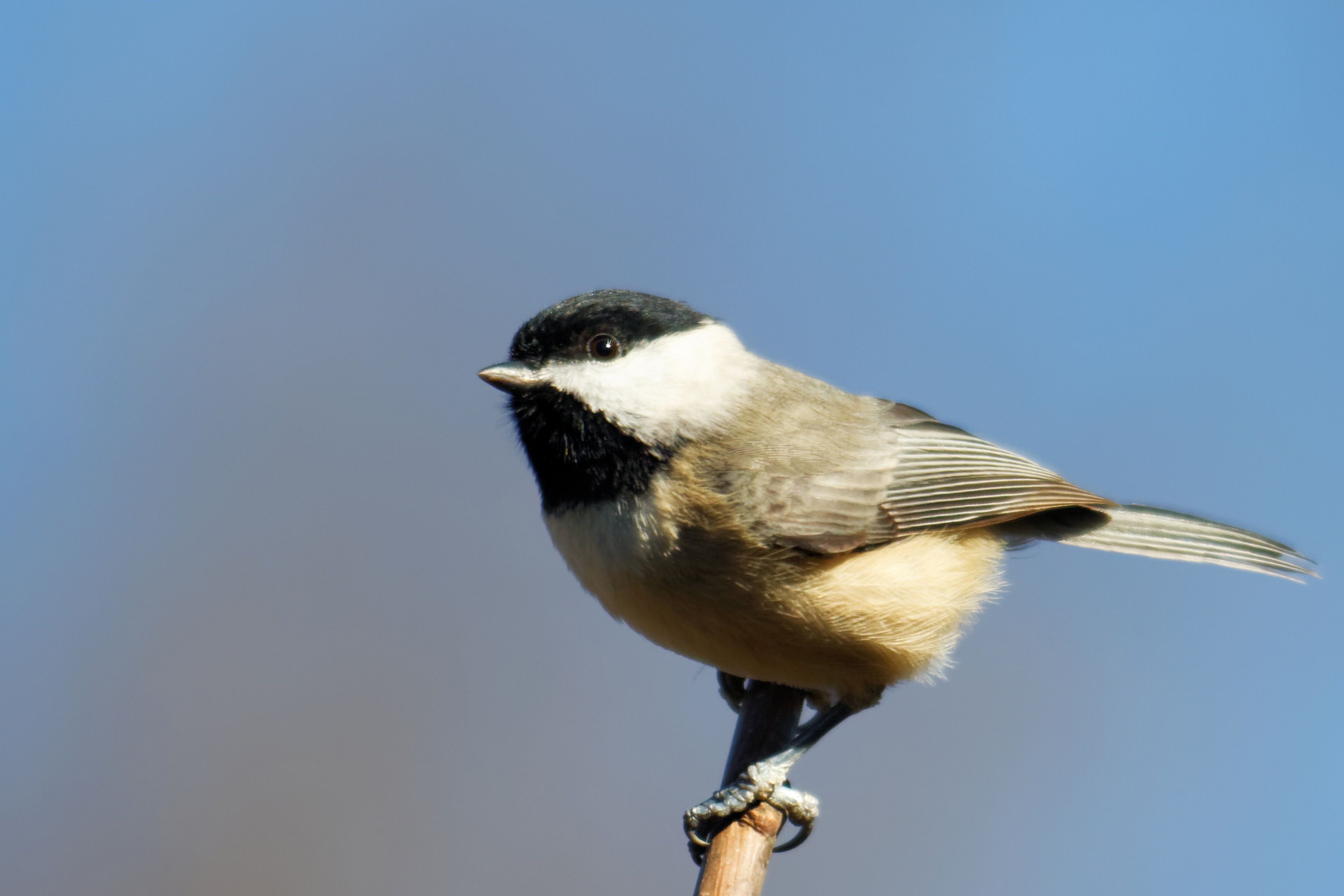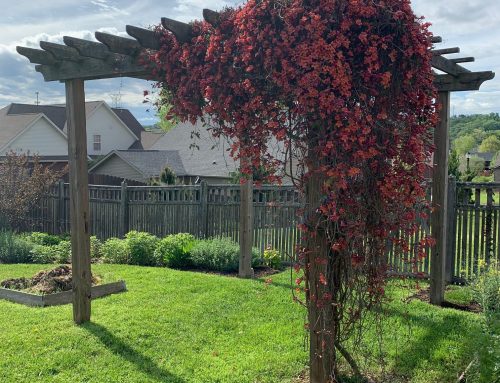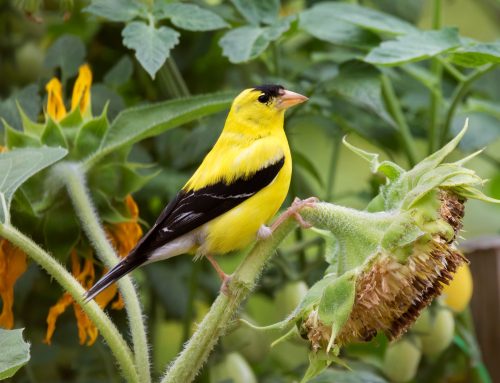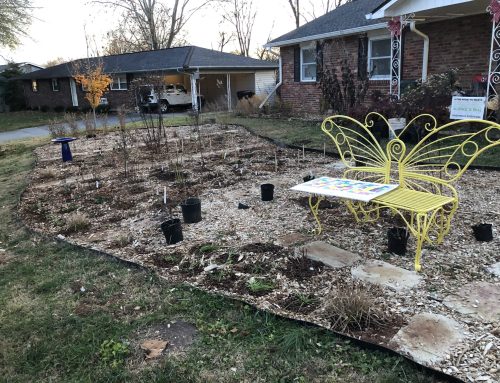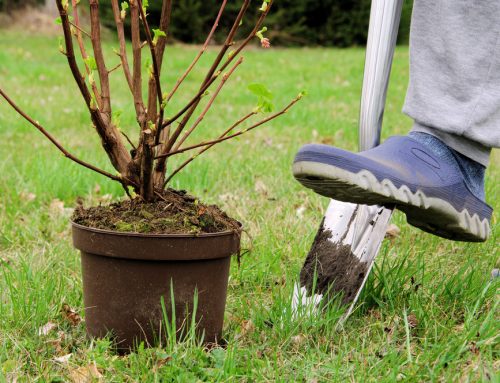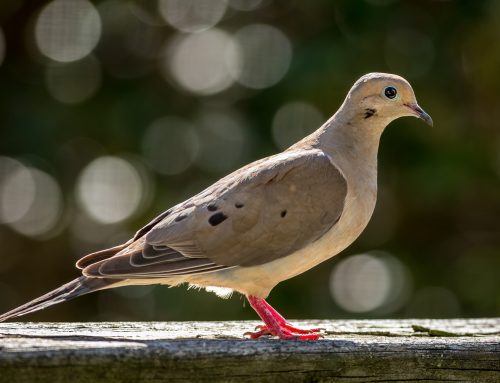by Karin Beuerlein
Six thousand caterpillars.
That’s how many it takes (at minimum) to raise a single brood of chickadees from hatching to fledging the nest. It’s an incredible figure, especially considering how many flights the parents have to make to search out those caterpillars and bring them back to their babies. Seeds and fruits aren’t the mainstay of raising young—nestlings need the protein found in caterpillars.
And where do you suppose all 6000 caterpillars come from?
That was the question I needed to answer in my own yard, where Carolina chickadees stopped breeding after the native vegetation around my house was lost to development. Even though my garden was growing, my bird diversity was declining.
Luckily, around the same time, I got hold of entomologist Doug Tallamy’s fantastic books, Bringing Nature Home: How You Can Sustain Wildlife with Native Plants and The Living Landscape: Designing for Beauty and Biodiversity in the Home Garden. If you aren’t familiar with either, I recommend you stop reading this and go read those. (Go right ahead; I’ll wait.) They’re absolute must-reads for any serious backyard birder. The first offers a plain-spoken primer for adding native vegetation to your property, and the second, authored with photographer Rick Darke, is a gorgeous illustrated guide that shows Tallamy’s principles in action.
Tallamy explains in great detail why we need to pivot away quickly from exotic plants and turfgrass if we want to keep birds around. In both books, he catalogues which plants we need most to create biodiversity and quantifies which make the biggest contributions. (If you can do only one thing for birds in your lifetime, plant an oak tree. Somewhere. Anywhere.)
Long story short: with few exceptions, native plants—and particularly native trees—are the only ones that native insects use to reproduce. They and they alone are the source of the insect protein that birds use to feed their young. In fact, Tallamy’s research shows that chickadees in particular need a landscape that’s at least 70% native in order to be able to sustain a brood successfully to fledging.
So I decided to take stock and count plant species. And I got an unpleasant surprise.
Even though I thought I favored native plants, something was amiss on my nearly half-acre landscape. Through a combination of practical considerations (selecting narrow exotic evergreens for a hedge), plant lust (looking at you, golden dawn redwood), and poor planning (because . . . I garden, therefore I make impulse purchases), I had a landscape where exotic species equaled half my total—and more than half my biomass, since many of the exotics were large trees.
It gets worse. On the ten properties that touch mine, comprising three acres, I counted a total of six native plants, period. You read that right. Welcome to the modern subdivision. Those native plants were a river birch whose future I’m nervous about because it’s planted too close to someone’s foundation, and five dogwoods in one backyard that are currently being overrun by morning glory vine and johnsongrass.
No wonder the chickadees were barely hanging on. They were signaling something was wrong: the local ecosystem had tipped too far away from their needs. That’s when I changed my gardening focus entirely to getting them back to breeding form. I’ll share more about that in an upcoming post.
Here’s my challenge to you: have you done a species count in your backyard? Not birds—native plants! It’s the first step toward making better bird habitat. Can a chickadee find 6000 caterpillars on your property?
